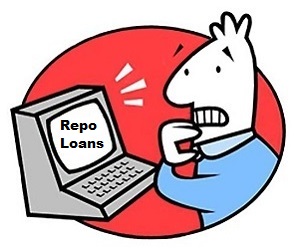Where Are the Hundreds of Billions in Loans from the Fed Actually Going on Wall Street?
by Pam Martens and Russ Martens, Wall St On Parade:
 No one can say with any certainty where the hundreds of billions of dollars that the Federal Reserve has been pumping into Wall Street since September 17 are actually ending up. The Fed is not releasing the names of which of its primary dealers (securities firms) are taking the lion’s share of the loans nor does anyone know if those borrowers are making further loans with the money (which is a core purpose of a central bank’s lender of last resort function) or simply plugging a whole in their own leaky boat. Astonishingly, Congress has yet to call a hearing to ask these critical questions.
No one can say with any certainty where the hundreds of billions of dollars that the Federal Reserve has been pumping into Wall Street since September 17 are actually ending up. The Fed is not releasing the names of which of its primary dealers (securities firms) are taking the lion’s share of the loans nor does anyone know if those borrowers are making further loans with the money (which is a core purpose of a central bank’s lender of last resort function) or simply plugging a whole in their own leaky boat. Astonishingly, Congress has yet to call a hearing to ask these critical questions.
Let’s say, hypothetically, that there is a bank with a large, interconnected footprint on Wall Street that’s in trouble and on top of that there’s a big hedge fund taking on water and listing on its side. The New York Fed (one of the 12 regional banks in the Federal Reserve system) in that situation might be expected to call all of the big lenders on Wall Street to a secret meeting at its offices and “suggest” (much like a consigliere makes a “suggestion”) that they bail out these entities for the good of the markets and financial system.
Could that really happen? Here’s a paragraph from a Wall Street Journal report dated September 25, 1998:
“Meeting Wednesday evening at the headquarters of the New York Federal Reserve Bank, 15 financial institutions agreed to chip in $3.5 billion to keep alive the Long-Term Capital Management L.P. hedge fund.”
The Long-Term Capital hedge fund was a five-year old firm with two Nobel laureates on board that fed exotic mathematical formulas into computers that then spit out the rationale for taking on insane levels of leveraged derivative bets. It all blew up spectacularly, of course.
Alan Greenspan, the Chairman of the Federal Reserve Board of Governors at the time, would later tell Congress that the decision to convene that meeting was done “on the judgment of the officials at the Federal Reserve Bank of New York.” In other words, the New York Fed typically believes it needs no outside approvals for its actions when it comes to Wall Street.
Fast forward to another crisis in September 2008, this time with a big, teetering investment bank. The Wall Street Journal reported on September 13, 2008:
“The Federal Reserve Bank of New York held an emergency meeting Friday night with top Wall Street executives to discuss the future of venerable firm Lehman Brothers Holdings Inc. and the parlous state of U.S. financial markets.”
In the case of Lehman, a solution was not obtained and the investment bank filed bankruptcy on September 15, 2008, bringing on the next leg of what would become the worst financial crisis since the Great Depression.
Last week Reuters’ David Henry reported that JPMorgan Chase may have contributed to the dangerous spike in overnight lending rates on September 17 by withdrawing liquidity from the system. The loss of liquidity triggered the New York Fed’s operation to pump billions of dollars of overnight and term loans into Wall Street each week since then. Henry wrote:
“Analysts and bank rivals said big changes JPMorgan made in its balance sheet played a role in the spike in the repo market, which is an important adjunct to the Fed Funds market and used by the Fed to influence interest rates…
“Publicly-filed data shows JPMorgan reduced the cash it has on deposit at the Federal Reserve, from which it might have lent, by $158 billion in the year through June, a 57% decline.”
The move by JPMorgan Chase, whose Chairman and CEO, Jamie Dimon, is the only person at the helm of a major Wall Street bank to have come through the 2007-2008 financial crisis, suggests that the bank is “getting closer to home” with its money, as the former CEO of Goldman Sachs, Lloyd Blankfein, phrased it during the last financial crisis.
Read More @ WallStOnParade.com
Loading...



